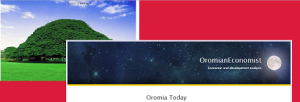Ethiopia’s remarkable education statistics mask a system in crisis December 28, 2017
Posted by OromianEconomist in Uncategorized.Tags: Africa, Education, Ethiopia, Ethiopia's higher-education boom built on shoddy foundations, Ethiopia’s fake economic growth borrows from ENRON’s accounting, Ethiopian People's Revolutionary Democratic Front, QZ
add a comment
Ethiopia’s remarkable education statistics mask a system in crisis

Thomas Yilma didn’t last a day as a teacher in an Ethiopian government school. After graduating from university he was packed off to a small village in a remote corner of the Ethiopian highlands with scant electricity or phone signal, let alone internet connection, where he was to begin his career. “I felt like I was being abandoned in the middle of nowhere,” he says now. After one restless night he turned around and headed back to the Ethiopian capital, Addis Ababa, leaving the country’s state education sector behind him.
Thomas’s story—extreme though it is—sheds some light on the troubles plaguing Ethiopia’s rapidly expanding school system. Though he eventually found a job in an American-owned private school, this too proved only temporary. After six years he did what many of his colleagues—and thousands of teachers across Ethiopia—so often end up doing, and quit the profession entirely. “I never had any desire to become a teacher,” he says. “You could guess what their lives were like. I wanted to be a doctor or an engineer—like everybody else.”
Few governments in Africa spend as much of their revenues on education as that of Ethiopia. At first sight this is surprising. Education in Ethiopia over the past decade is in some senses a success story. Government statistics are not wholly reliable—the ruling party does a good job of steering clear of most international surveys, making regional comparison difficult—but many of the headline figures are impressive regardless. Few governments in Africa—or elsewhere, for that matter—spend as much of their revenues on education as that of Ethiopia. In a continent which today directs a higher proportion of government expenditure towards the sector than any other—18.4%—Ethiopia has consistently been in the top rank for the past decade. Between 2000 and 2013 it almost doubled the share of its budget allocated to education, from 15% to 27%.
Measured in terms of access to primary education (which is now free), the results are striking. Ethiopia now has one of the highest enrollment rates in Africa, up from the nadir in the early 1990s when it had one of the world’s lowest. The number of primary schools almost tripled from 1996 to 2015, while student enrollment grew from less than 3 million to over 18 million within the same period—almost universal. Youth literacy meanwhile jumped from 34% in 2000 to 52% in 2011.
According to the UN’s Education For All Development Index, which provides a snapshot of the overall progress of national education systems, Ethiopia came second only to Mozambique in terms of size of the improvement over the previous decade, and made fastest progress in terms of expanding universal primary enrolment. Between 2001 and 2008, the number of out-of-school children fell by more than 60%.Compare this to Nigeria, which at the same moment experienced a lost decade: the percentage of children out of school showed no improvement whatsoever by the end of it.
Teacher status
But all this masks a deep-seated malaise. According to the government’s own figures, for every 1,000 children who begin school, around one-half will pass uninterrupted to Grade 5 and only one-fifth to completion of Grade 8. Soaring enrolment at secondary level in Addis Ababa—statistical quirks mean the figure here is actually over 100%—contrasts with less than a tenth in the sparsely populated, largely pastoralist region of Afar, which stretches eastwards towards Eritrea and Djibouti.
Those who do manage to stick it out struggle, consistently under-performing what the curriculum expects of them. According to Belay Hagos, director of educational research at Addis Ababa University, students at various grades are learning on average only 40% of the material they are supposed to master. National Learning Assessments, conducted every four years, reveal a stubborn lack of progress. The average score for a Grade 4 student, for instance, dipped from 41% to 40% between 2010 and 2014, and remains stuck below 50% in all regions except Addis Ababa. Comparing 15-year-old children who correctly answered comparable maths questions in 2009 and 2016, Young Lives, a British charity, also found no overall improvement. “I think the education system is in crisis,” says Alula Pankhurst, the charity’s country director.
Why? Part of the answer lies in Thomas’s story. Ethiopia’s brightest and best don’t want to be teachers, and those that do rarely last long. The country’s teachers were once high status: in the northern region of Tigray, the word itself is a title, used to indicate social respect. But this respect has “declined over time,” says Hagos. The profession has been progressively been de-professionalized, ever since the days of the Marxist regime known as the Derg, during which teachers were either co-opted or purged.
Today, teachers are mostly selected from poor-performing students: those who graduate Grade 10 in the top 30% or so go on to Grade 11; those in the tier below join the police; the rest who pass can go to teacher training college. “This is not a good strategy,” says Hagos. “They can’t be good teachers because weren’t good students in the first place.” His latest research has uncovered what he calls a “professional identity crisis”. 70% of those surveyed reported feeling bad about the profession, while 98% said the pay was too low. “They are teachers but they don’t want to be called teachers,” he says. “They are ashamed of it.”
Language problem
Other problems specific to Ethiopia—beyond the obvious lack of financial resources—are compounding its teaching troubles. An especially tricky one is the country’s federal constitution, which devolves a great deal of education policy to the nine regional governments, in particular language of instruction.
“The transition to English in some regions can be a very, very steep curve.” Even at university level standards can be shockingly poor. Regions tend to choose to educate their children at primary level in the local language, but after that instruction suddenly switches to English—a treacherous passage that few sail through easily. “It’s very worrying,” says Pankhurst. “The transition to English in some regions can be a very, very steep curve.” Even at university level standards can be shockingly poor.
The government knows it has itself in a bind: expanding educational access at such a fast pace was always bound to lead to a dilution in standards. “Ethiopia judiciously picked one route, which was students in rooms and bums on seats,” says Ravi Shankar of Accelerated, a company based in Addis Ababa that is working to improve teaching standards in Ethiopia and elsewhere on the continent. Now the government is making efforts to correct this: teachers wages, for instance, were increased sharply last year, and it has embarked on a large-scale program of skills training for teachers.
But whether it can ever follow in the footsteps of a country like Vietnam—whose single-minded focus on education the government has long sought to emulate—is uncertain. And what if it fails? “A crisis of expectation is a recipe for unrest,” says Pankhurst, noting that the anti-government protests which have swept across much of the country since 2014 were led by students with few prospects and even less hope.
WMS students lend hands to Oromo Awareness Project March 11, 2017
Posted by OromianEconomist in #OromoProtests.Tags: #OromoProtests, Africa, Education, Ethiopia, Genocide Against Oromo People, News, Oromia, Oromo, Oromo Awareness Project, WMS, Worthington Middle School
add a comment
WMS students lend hands to Oromo Awareness Project
WORTHINGTON — Worthington Middle School students came together Friday afternoon to make bracelets as a way to support the Oromo Awareness Project.
The Oromo Awareness Project is an effort led by WMS student and Oromo eighth-grader Chaltu Uli, who hopes to bring awareness to the community about injustice happening in her home country of Ethiopia — specifically with the Oromo people.
The Oromo, Ethiopia’s largest ethnic group, have developed their own cultural, social and political system throughout history that differs from the rest of the country, which is governed by the Tigray People Liberation Front (TPLF). The TPLF has stepped over human rights and silenced any entity or individuals who don’t support its leadership, creating an environment of crisis in Ethiopia. There is constant confrontation currently taking place between the TPLF and the Oromo people that has resulted in significant loss of life.
Initially, Uli handed out letters during Worthington’s International Festival in which she shared her story and the situation in Ethiopia.
“The letter had a good response among some but she wanted to make it bigger, and so we thought, ‘What we can do to get the word out?’ said Kelly Moon, English immersion teacher at WMS. “And what actions do we want people to have in response to the letter?”
Moon was able to answer those questions while attending a student council leadership conference at which she connected with More Believe, a multimedia organization that helps companies promote their causes. Although the company agreed to produce the video for an affordable price, Moon still needed to come up with an idea to finance the video.
“The video is basically going to be about her story and what is happening in Ethiopia,” Moon said. “In order to make that video, we need the funds to create it.”
Uli and part of her family came to the United States in 2014 to flee the violence taking place in their country. However, her mother and youngest sister are still in Ethiopia.
“I have family there, so I am really concerned for them because there are really bad things happening there,” Uli said.
Despite the difficult situations she has had to overcome, Uli has been able to learn English and adapt to her new environment. She still worries, though, about the injustice happening in her native land.
Moon and Uli came up with the idea of creating bracelets and will sell them in the community to raise funds for the video. The student-made bracelets have four beads that represent the Oromo flag. Along with the bracelet, a short description of the meaning of each color is written on the back of the packaging.
Students will sell the bracelets, and a $500 goal has been set.
Moon explained that students are still deciding how to proceed after video is made. Possibilities include approaching legislators or donating funds to an organization, among others.
“We are still trying to figure out which avenues are going to be legitimate — like if it’s going to be donation, where is that money going to go where it will actually help and not just be incorrectly used,” Moon said.
Uli explained that her ultimate goal with the project is to bring awareness to government officials so they take action in helping the Oromo people.
“If they want they can donate money, but more importantly, we want them to contact the government and tell them about the Oromo people and what is happening in Ethiopia,” Uli said. “In the end, our goal is to make the government aware and to take action.”
Moon noted that although the project is focused on the Oromo, she hopes people will be more empathetic with refugees — or any individual who arrives in the country who is running from violence.
“I think when you know somebody’s story, it puts a face to the issue,” Moon said. “it’s not longer just an issue or problem “





You must be logged in to post a comment.